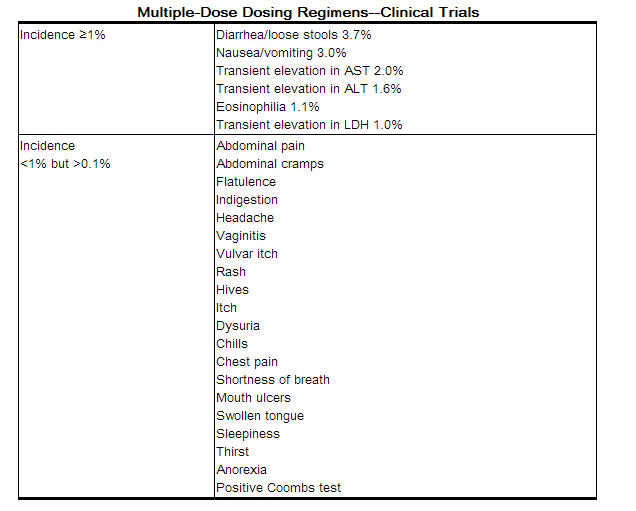Cefuroxime axetil microbiology
Editor-In-Chief: C. Michael Gibson, M.S., M.D. [1];Associate Editor(s)-in-Chief: Abdurahman Khalil, M.D. [2]
The in vivo bactericidal activity of cefuroxime axetil is due to cefuroxime's binding to essential target proteins and the resultant inhibition of cell-wall synthesis.
Cefuroxime has bactericidal activity against a wide range of common pathogens, including many beta-lactamase−producing strains. Cefuroxime is stable to many bacterial beta-lactamases, especially plasmid-mediated enzymes that are commonly found in enterobacteriaceae.
Cefuroxime has been demonstrated to be active against most strains of the following microorganisms both in vitro and in clinical infections as described in the INDICATIONS AND USAGE (see INDICATIONS AND USAGE).
Aerobic Gram-Positive Microorganisms
Staphylococcus aureus (including beta‑lactamase−producing strains)
Aerobic Gram-Negative Microorganisms
Haemophilus influenzae (including beta‑lactamase−producing strains)
Moraxella catarrhalis (including beta‑lactamase−producing strains)
Neisseria gonorrhoeae (including beta‑lactamase−producing strains)
Spirochetes
Cefuroxime has been shown to be active in vitro against most strains of the following microorganisms; however, the clinical significance of these findings is unknown.
Cefuroxime exhibits in vitro minimum inhibitory concentrations (MICs) of 4.0 mcg/mL or less (systemic susceptible breakpoint) against most (≥90%) strains of the following microorganisms; however, the safety and effectiveness of cefuroxime in treating clinical infections due to these microorganisms have not been established in adequate and well-controlled trials.
Aerobic Gram-Positive Microorganisms
NOTE: Listeria monocytogenes and certain strains of enterococci, e.g., Enterococcus faecalis (formerly Streptococcus faecalis), are resistant to cefuroxime. Methicillin-resistant staphylococci are resistant to cefuroxime.
Aerobic Gram-Negative Microorganisms
NOTE: Pseudomonas spp., Campylobacter spp., Acinetobacter calcoaceticus, Legionella spp., and most strains of Serratia spp. and Proteus vulgaris are resistant to most first- and second-generation cephalosporins. Some strains of Morganella morganii, Enterobacter cloacae, and Citrobacter spp. have been shown by in vitro tests to be resistant to cefuroxime and other cephalosporins.
Anaerobic Microorganisms
Peptococcusniger
NOTE: Most strains of Clostridium difficile and Bacteroidesfragilis are resistant to cefuroxime.
Susceptibility Tests
Dilution Techniques
Quantitative methods that are used to determine MICs provide reproducible estimates of the susceptibility of bacteria to antimicrobial compounds. One such standardized procedure uses a standardized dilution method1 (broth, agar, or microdilution) or equivalent with cefuroxime powder. The MIC values obtained should be interpreted according to the following criteria:
A report of "Susceptible" indicates that the pathogen, if in the blood, is likely to be inhibited by usually achievable concentrations of the antimicrobial compound in blood. A report of "Intermediate" indicates that inhibitory concentrations of the antibiotic may be achieved if high dosage is used or if the infection is confined to tissues or fluids in which high antibiotic concentrations are attained. This category also provides a buffer zone that prevents small, uncontrolled technical factors from causing major discrepancies in interpretation. A report of "Resistant" indicates that usually achievable concentrations of the antimicrobial compound in the blood are unlikely to be inhibitory and that other therapy should be selected.
Standardized susceptibility test procedures require the use of laboratory control microorganisms. Standard cefuroxime powder should give the following MIC values:
Diffusion Techniques
Quantitative methods that require measurement of zone diameters provide estimates of the susceptibility of bacteria to antimicrobial compounds. One such standardized procedure2 that has been recommended (for use with disks) to test the susceptibility of microorganisms to cefuroxime uses the 30-mcg cefuroxime disk. Interpretation involves correlation of the diameter obtained in the disk test with the MIC for cefuroxime.
Reports from the laboratory providing results of the standard single-disk susceptibility test with a 30-mcg cefuroxime disk should be interpreted according to the following criteria:
Interpretation should be as stated above for results using dilution techniques.
As with standard dilution techniques, diffusion methods require the use of laboratory control microorganisms. The 30-mcg cefuroxime disk provides the following zone diameters in these laboratory test quality control strains:
References
http://www.accessdata.fda.gov/drugsatfda_docs/label/2007/050605s042lbl.pdf



